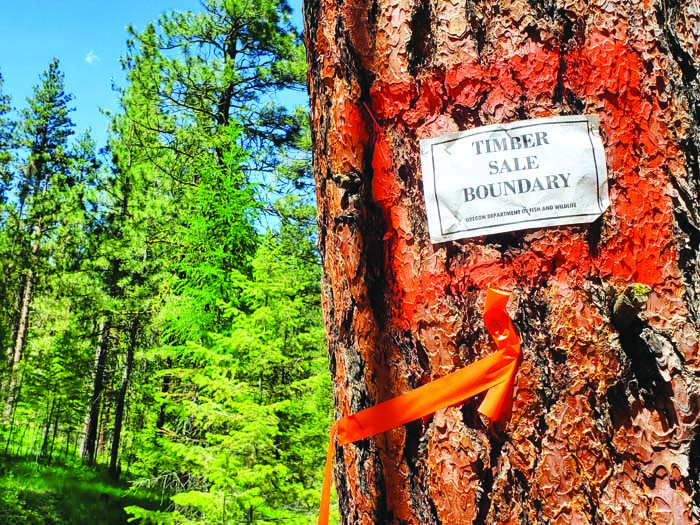State planning timber sale near elk-feeding site off Old Auburn Road
Published 1:48 pm Thursday, June 13, 2024

- The Oregon Department of Fish and Wildlife is planning a timber sale near the state-owned elk-feeding site along Old Auburn Road, about 10 miles southwest of Baker City. The project is designed to increase the growth of grass and shrubs that elk and deer eat.
The Oregon Department of Fish and Wildlife is planning a timber sale near the elk-feeding station on Old Auburn Road southwest of Baker City, with a goal of spurring the growth of grass and shrubs that elk, deer and other wildlife eat.
“The objective for the project is basically winter range enhancement for big game and wildlife, to reduce the timber stands to create early stage grass,” said Dan Marvin, who manages ODFW’s Elkhorn Wildlife Area.
That includes 10 sites, along the eastern base of the Elkhorn Mountains, where ODFW workers feed hundreds of elk and deer each winter.
The wildlife area, created in 1971, is intended not to save the animals from starvation, but rather to encourage them to keep away from the haystacks ranchers put up to feed their cattle herds each winter.
The feeding site just south of Old Auburn Road is the southernmost of the sites that make up the wildlife area.
The state-owned property is mainly south of the road, but sections also extend to the north of the road, which becomes Forest Road 7220 when it enters the Wallowa-Whitman National Forest.
Marvin said the timber sale, which is proposed on 368 acres, is in the preliminary stage. There is no estimate for the timber volume.
“Ideally once it’s finalized we can offer it up to public bid, but it’s usually two years to implementation,” he said.
The forest in the area is predominantly ponderosa pine, with some fir.
Marvin said the objective is to remove the least healthy trees, including those with insect infestations or disease, leaving the healthier trees.
Over the past few years, ODFW has also logged parts of its property near Anthony Creek, west of North Powder. That site includes the wildlife area headquarters as well as a meadow where hundreds of elk gather each winter.
Logging on about 400 acres yielded about 2 million board-feet of timber.
The timber sale there, in addition to promoting the growth of grass and shrubs, was designed to reduce the risk of wildfire by thinning the forest, focusing on trees that were infected with mistletoe, a parasitic plant that stunts the tree’s growth and produces “brooms” — dense clusters of limbs on the tree’s trunk.
Marvin said the logging also created snags and tree cavity habitat for birds.




